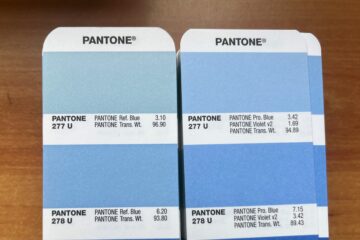“Switching off” and turning to print is better for your health and it may also be the answer to a good night’s sleep.
From: Two Sides
The prevalence and use of electronics in all aspects of daily life is steadily increasing with the average U.S. adult spending 6.3 hours each day with digital media, over half of which is spent on their smartphones. The number is even higher, up to 9 hours per day, for teens.1, 2
According to a 2019 Two Sides sponsored study conducted by Toluna, there is mounting evidence that consumers are feeling digital overload and the long-term negative health effects of electronic overuse.3
In the U.S. and Canada, 53 and 52% of respondents, respectively, are concerned that the overuse of electronic devices could be damaging to their health. Similar numbers, 49% and 46% believe they spend too much time on electronic devices. Finally, 31% of American respondents and 27% of Canadians feel they are suffering from “digital overload.”
Too much screen time can indeed affect your health. Digital eye strain (DES), also known as computer vision syndrome, includes symptoms such as headaches, double vision, blurred distance vision, irritated or burning eyes, dry eyes and tired eyes. Estimates suggest 50% or more of computer users suffer from at least one of these symptoms while they are looking at a screen.4 A study that compared reading on a screen to reading on paper noted that after reading from a smartphone, eye strain symptoms were significantly worse than for the printed hardcopy.5 Scientists are wondering how much of the recent and alarming rise in myopia (nearsightedness or difficulty seeing distant objects clearly) is due to too much screen time. If current trends continue, 50% of the world’s population will be myopic by 2050.6
One thing researchers do agree on is the harmful effects of reading from screens on sleep.7 Several years ago, a National Sleep Foundation survey found that 90% of Americans reported using light-emitting devices within an hour of going to bed and greater use was associated with worse sleep outcomes at all ages. Users may sleep less, sleep patterns can be disrupted, and daytime sleepiness increased.8,9 And all those changes in sleep can have detrimental effects on our well-being and the nationwide impact to long-term brain health is potentially large.10
The light emitted from electronic devices is enough to disrupt sleep patterns, negatively impacting concentration and brain development. This is especially important for children where the quality of sleep is necessary for mental development.11
A recent study conducted by the American Association of Pediatrics (AAP) shows supporting evidence that a greater-than-average screen time promotes a greater chance of developing attention problems. A correlation between excessive screen time and attention deficiencies is clear.12
Too much screen time has also been linked to increases in anxiety and depression, shortened attention spans and a variety of other negative effects on our well-being although evidence is often contradictory.
We evidently understand that too much screen time can be bad for us. There is also a clear preference among the Two Sides survey respondents to enjoy the “offline” world with 71% of Americans and 68% of Canadians believing in the importance of “switching off” and reading more in print.
Picking up a book, magazine or newspaper may be the ticket to relaxation and a good night’s sleep, not to mention getting immersed in your subject. The preference for reading in print by a majority of consumers was reflected in the Toluna study which found that 68% of Americans and Canadians prefer reading a book in print (versus digital). For magazines, the preference for print was 65% for the U.S. and 59% for Canada.
Detailed results of the Toluna survey can be found at https://twosidesna.org/survey
______________

